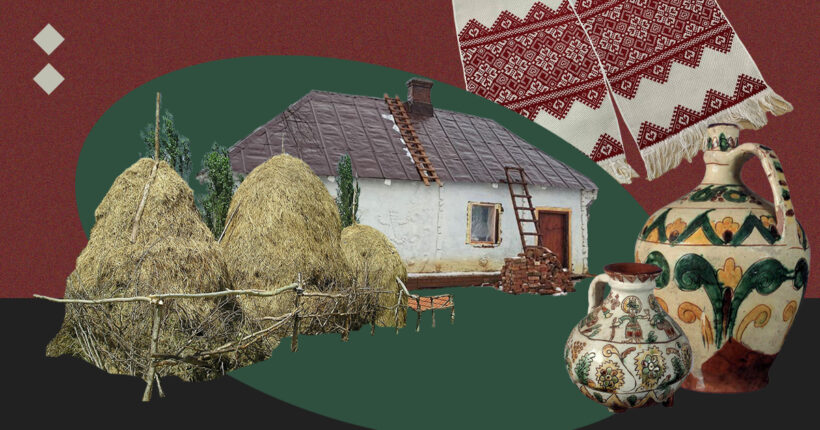
What is the problem?
For centuries, Russian imperialism has worked to oppress and erase Ukrainian traditions, up until today — as the war unleashed by Russia forces Ukrainians from their homes, leaving behing their family archives, and heirlooms, ripping away the opportunity to enjoy life on their own land. Not only do people lose the simple pleasures of gardening in their yards or visiting rivers, ponds, and forests familiar from their childhood – people lose the opportunity to lead a traditional way of life close to nature, based on knowledge and practices handed down from their parents and grandparents.
What is the solution?
Living heritage gives people the strength and stability to remain themselves. The task of Ukrainians today who are proud of their traditional knowledge, skills, and practices is to preserve them despite all the problems and challenges of the war. This carries a significant potential for the post-war recovery of Ukraine — both for building communities and social cohesion and for physical reconstruction using local resources.
The Cultural Dialog is already implementing these principles in practice. In the village of Cherneshchyna of the Krasnokutsk community of the Kharkiv region, Cultural Dialog restored an abandoned mud house together with locals in a project symbolically named НLYNA-hub, which translates as mud-hub. Space for communication and co-creation is now operating out of the hundred-year-old house.
Rubryka looks at how the project united people who value heritage and believe in the potential of local knowledge and skills.
How does it work?
In one's house, one's own truth, strength, and will
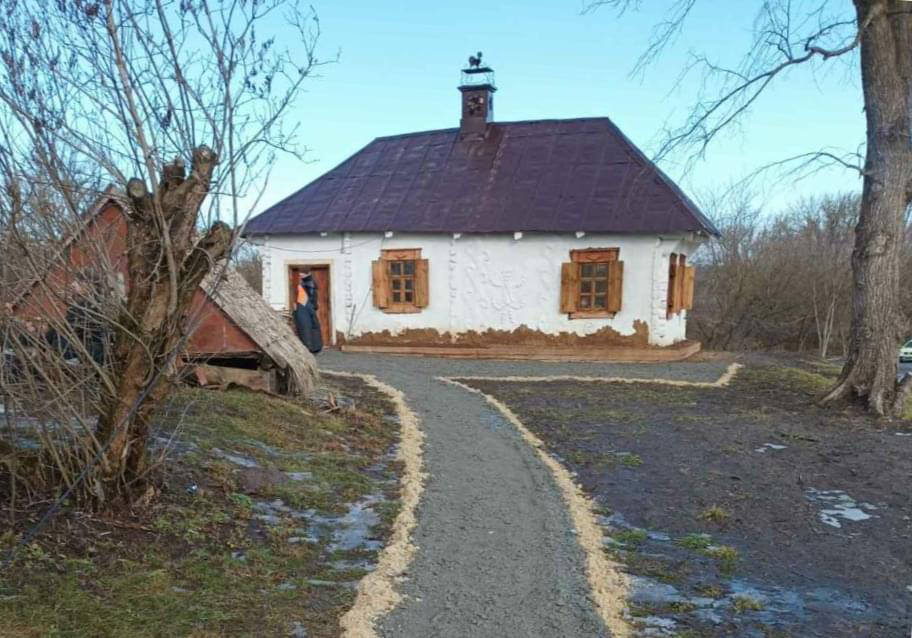
The mud construction building in which the co-creation space HLYNA-hub now works.
A beautiful white house on a hill above the central street of the village of Cherneshchyna is now clearly visible from the village road. Only a year ago, it was abandoned and hidden behind the trees and weeds.
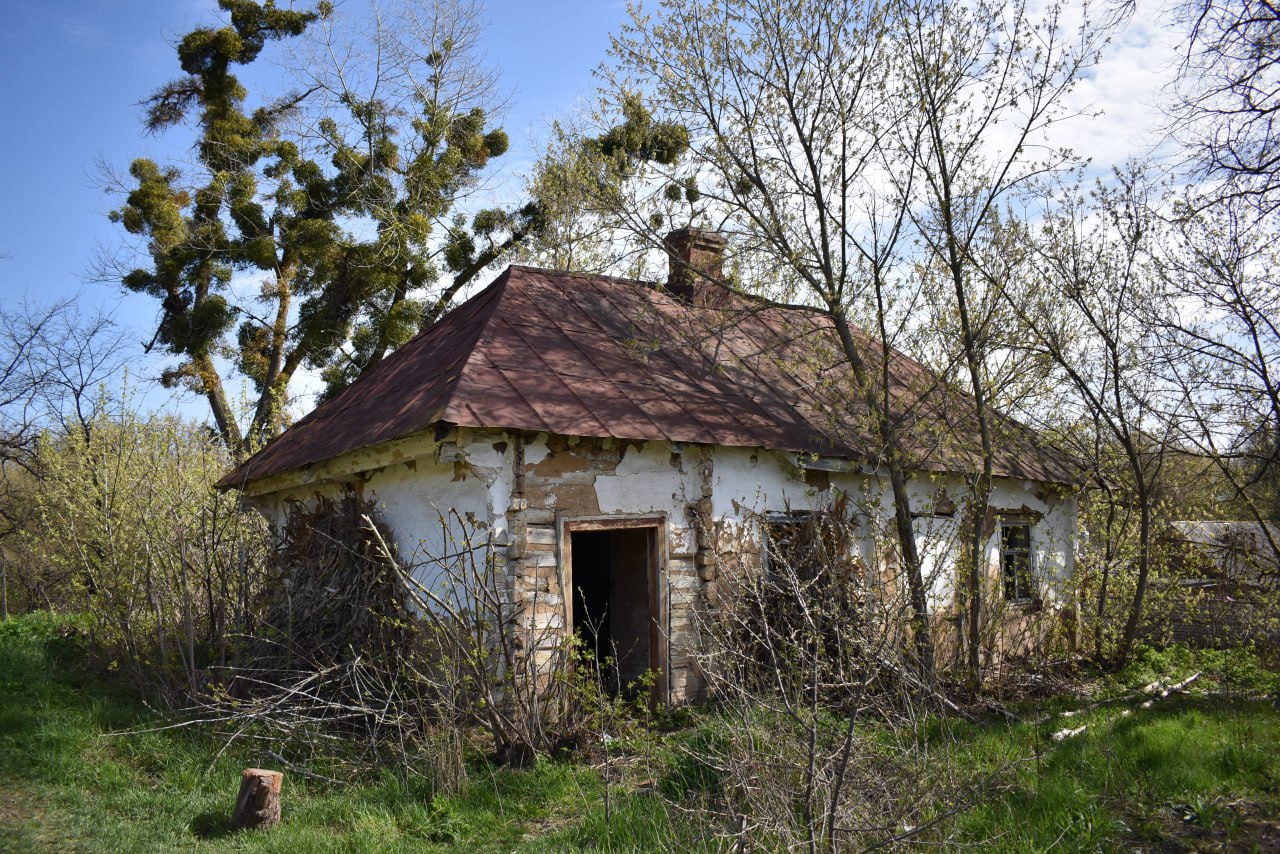
This is how the house looked before its reconstruction.
The idea of restoring the hundred-year-old mud house appeared in February 2023. As Nataliia Momot, director of the Krasnokutsk Lyceum, said that it was high schoolstudents who initally proposed restoring the house. At that time, they had already taken part in a project on "Teaching and learning with the help of living heritage," implemented with the support of the UNESCO Foundation. The team of teachers and students chose to study the traditions of building and decorating Ukrainian mud houses. Since then, they have practically become experts in this topic. The delegation from Krasnokutsk even participated in the Venice Biennale with the Ukrainian DNA project, proposing the principles of rebuilding modern Ukraine while preserving traditional culture.
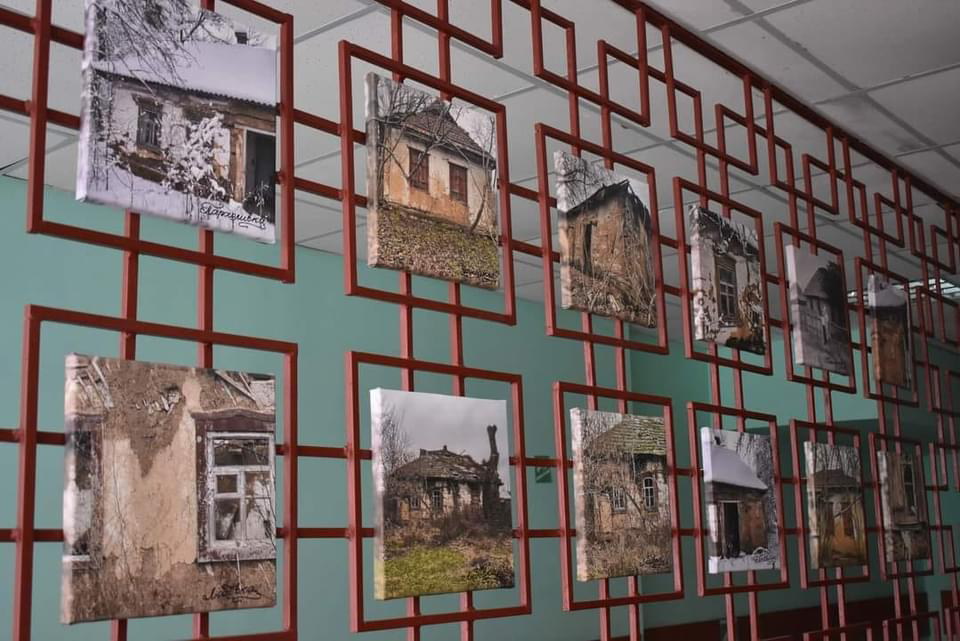
An exhibition of restored photos of mud huts from the photo archives of residents of the Krasnokutsk community.
All this knowledge came in handy when restoring the mud house, but knowledge alone was not enough. Local self-government came to their assitance — the Krasnokutsk settlement council became a co-organizer of the project under co-financing terms.
"Our house has come to life, and it is as elegant as a hundred years ago"
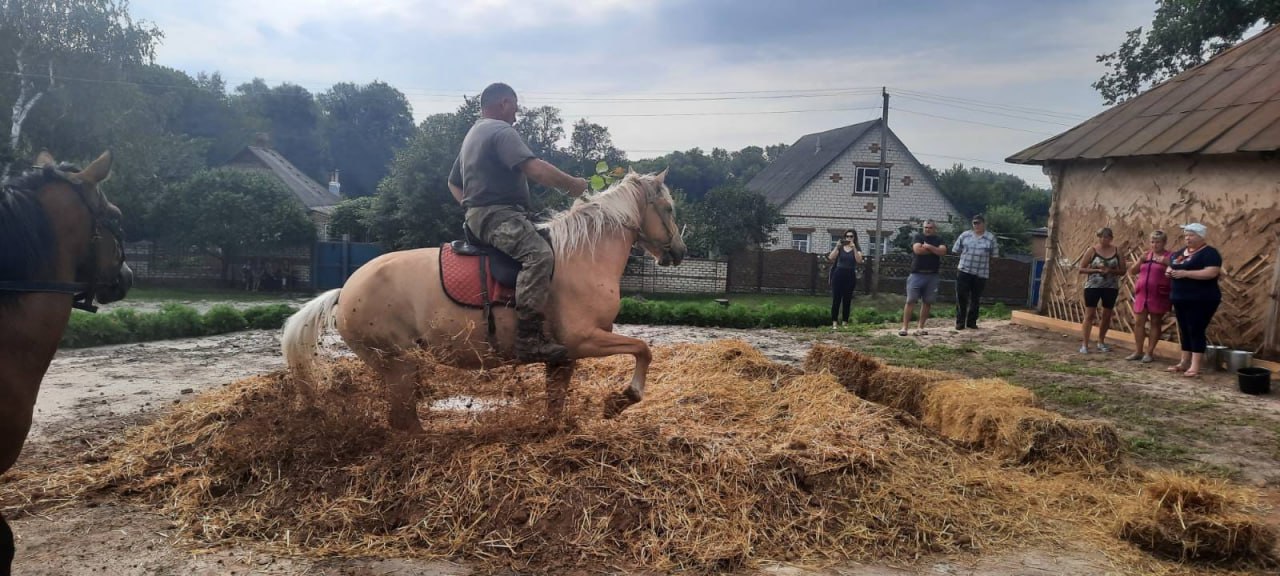
You may even need the help of a horse in the process.
At first, the workers of communal services cut down wild trees, uprooted bushes, cleaned the vegetable garden, and planned the territory. Next, students, teachers, residents of surrounding villages all joined the restoration process – in total, more than 50 people, which is a considerable number for a small village like Cherneshchyna.
Not only was the method of restoring the house traditional, but the approach of working in a group is also traditional for Ukrainians. "Toloka" is a form of mutual assistance among villagers, organized to work together on tasks that require many hands.
"Even the rain did not hinder the toloka: it was wet, but we were happy from communicating and working together," Momot recalls.
Later, the walls of the hut were primed and whitewashed, and local artisans restored the stove, walls, floor, windows, doors, and roof.
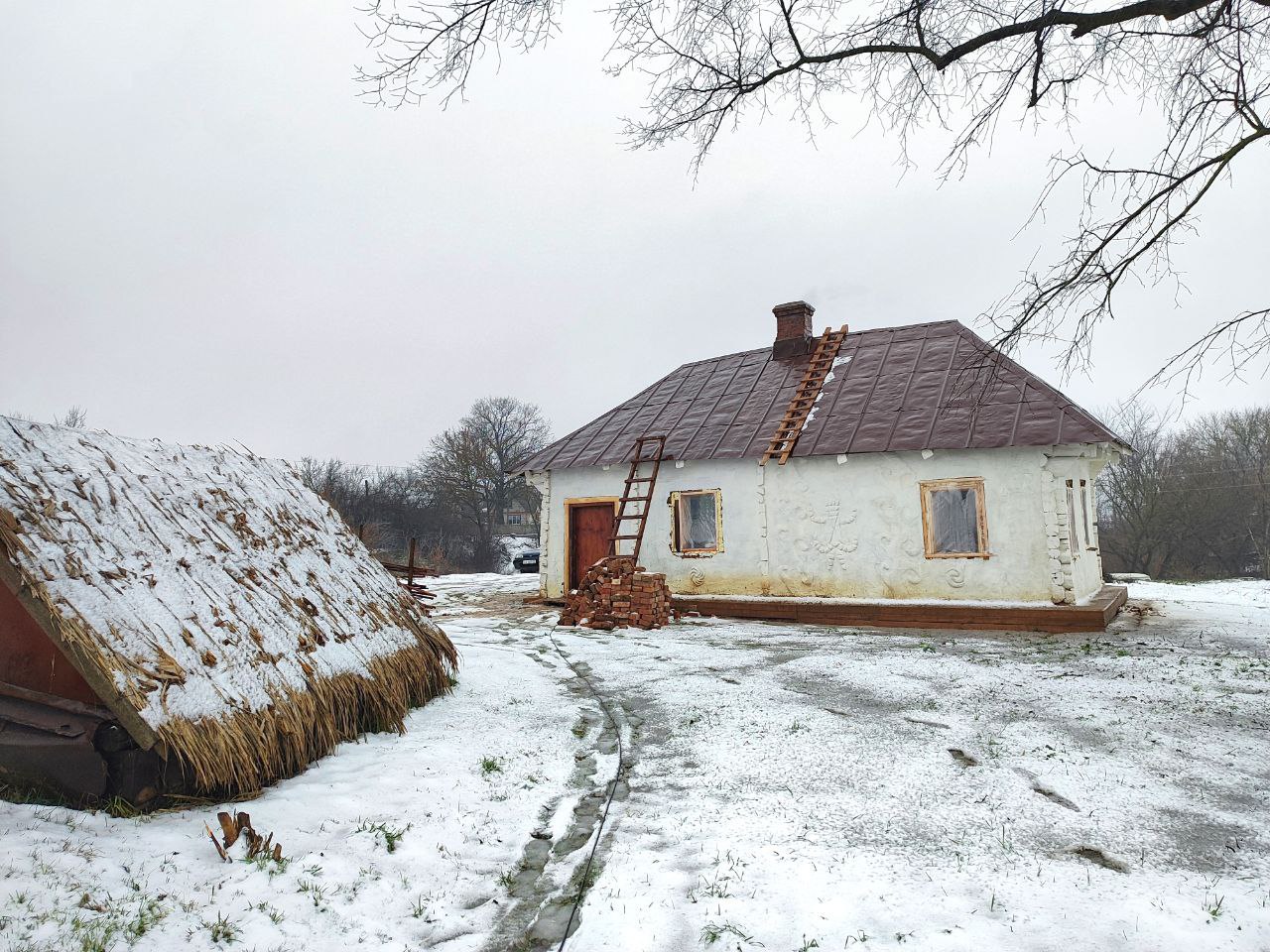
Roof restoration process.
"It is important traditional knowledge that is passed down from generation to generation and is essential for sustainable development because it is based on the use of local resources (clay) and environmentally friendly approaches in construction," Iryna Katz, founder of Cultural Dialog shares.
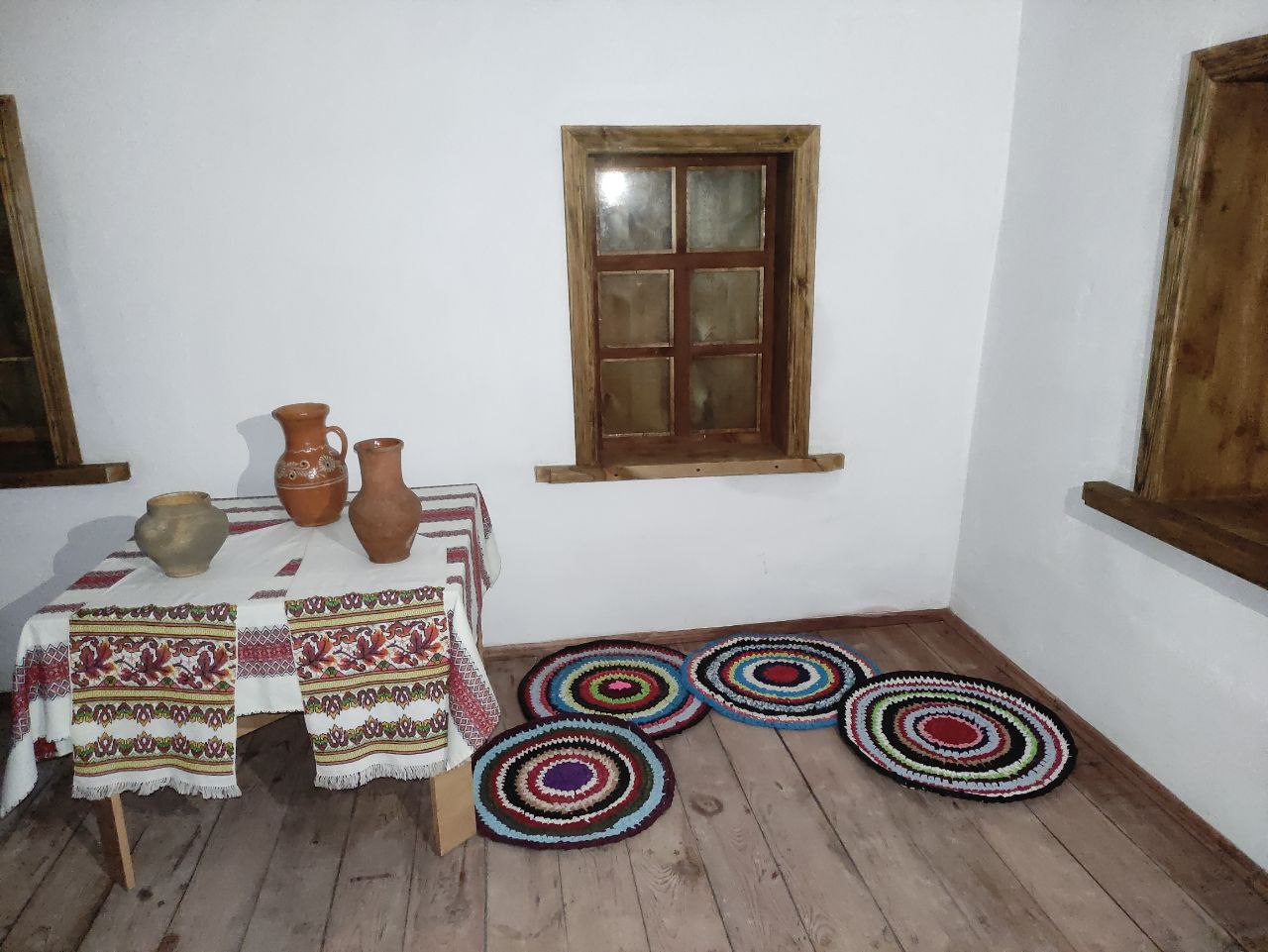
This is what the interior of НLYNA-hub looks like now.
The restoration of the house was only the beginning. After the talk, Katz met with activists and the head of the community. As a result, a memorandum of cooperation was signed, and the jointly developed НLYNA-hub preKRASNOkut project was selected as one of the ten winners in the competition for grants from Cedos and the Western NIS Enterprise Fund. To implement their idea, the project team received financing of one million hryvnias.
Traditional is not just meant for the museum
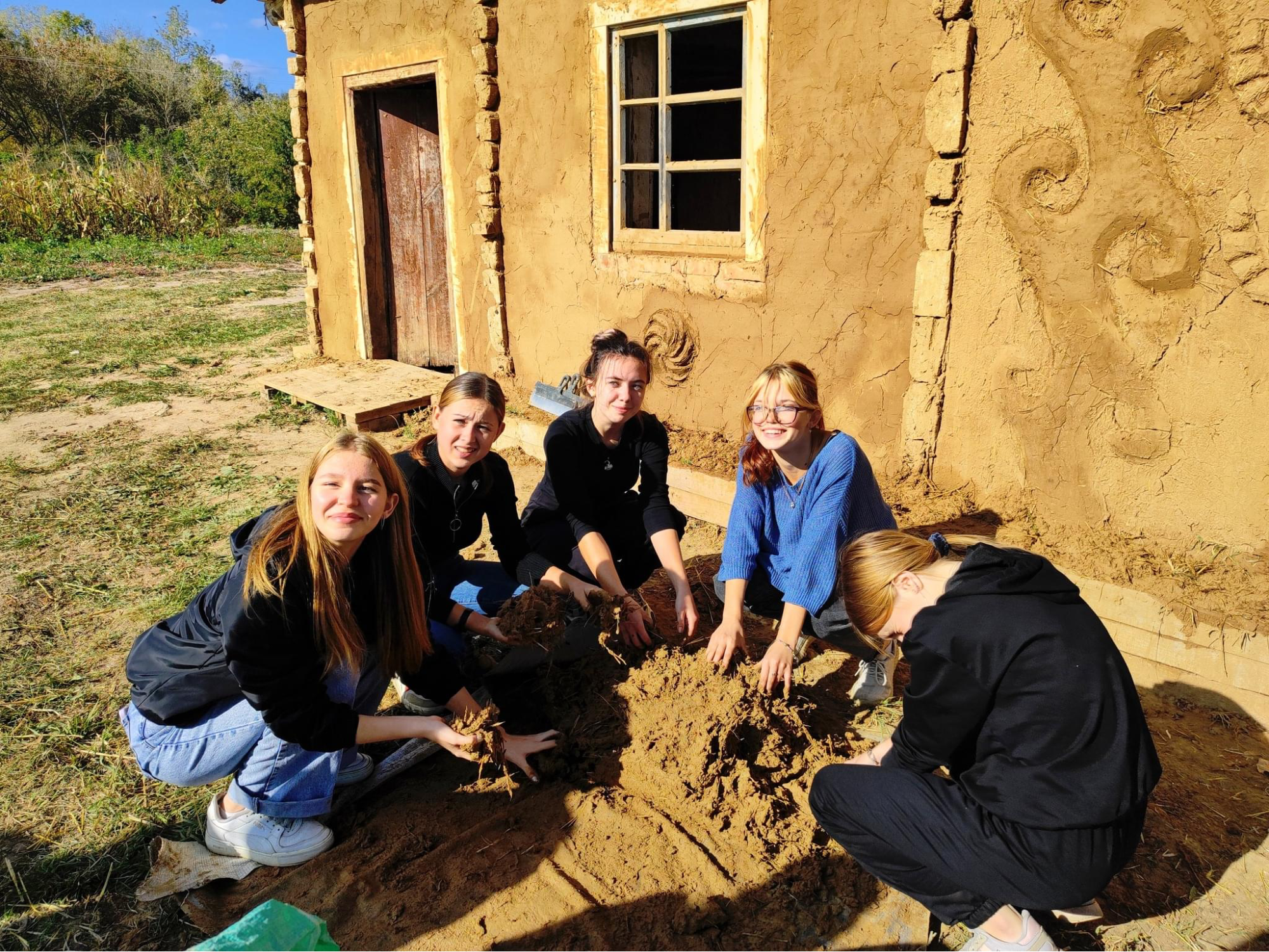
Master class on mass plastering of the house.
The transformation of the hut into a center for co-creation began as an accessible space where locals could gather at their leisure, communicate, collaborate, and learn new things. The project was called HLYNA-hub.
"We wanted to draw attention specifically to the social function and applied value of traditional knowledge and skills for the community," Katz told Rubryka. Holding master classes seemed like a great idea because it provides an opportunity to study and understand the potential of traditions for the future. It gives space for thinking about the modern meaning of these traditions, and the possibility of practicing them using modern technologies.
The project team asserts that tradition is not only meant to be observed in the museum – it is like strong roots from which a new, unique life grows and blossoms with its own identity.
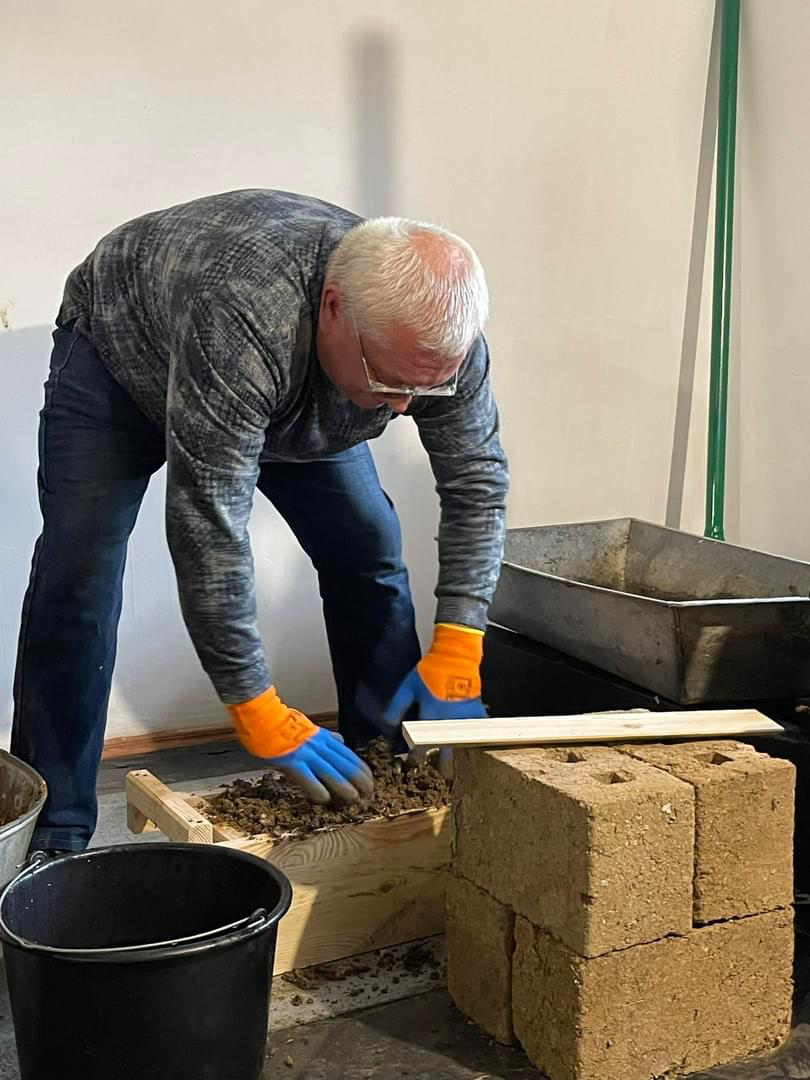
Vyacheslav Nikitchenko conducts a master class on making adobe blocks.
A local craftsman, Vyacheslav Nikitchenko, held a master class on making adobe blocks – unfired bricks made from clay, straw, and sand. It is an affordable and environmentally friendly building material because it is based on local resources (clay) and traditional approaches in construction (plastering and group work). There is no need to doubt the relevance of this traditional skill while every day, Russia continues to destroy the homes of Ukrainians.
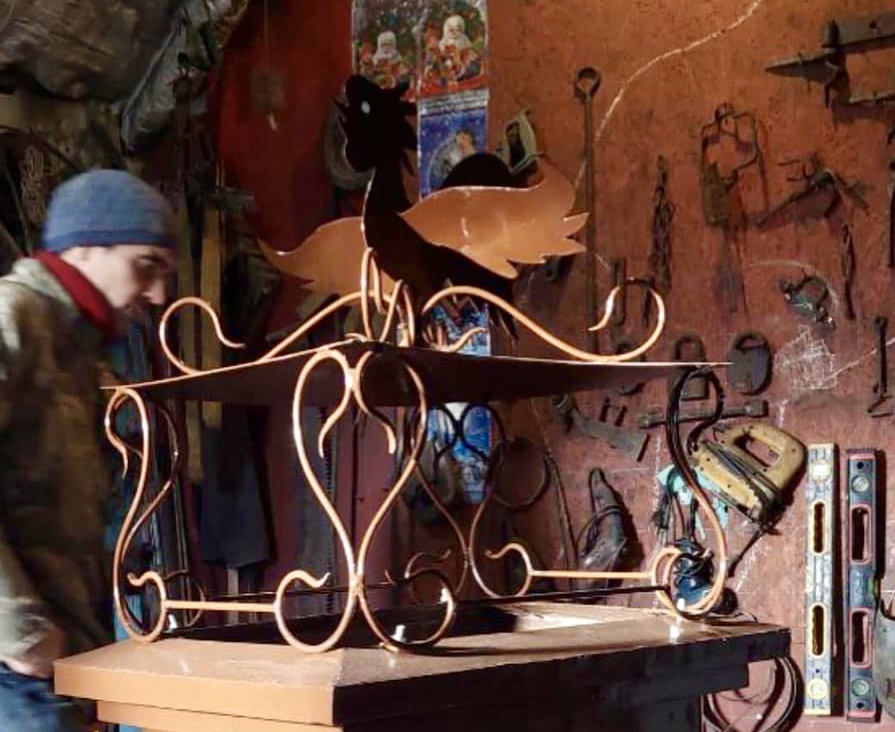
Blacksmithing master class.
An educational space has been set up in the center. Master classes in the hub are open to schoolchildren from Krasnokutsk and the surrounding villages. Some students of have already attended classes on decorating the windows and doors of a plaster house, working in a forge, and making a chimney. In addition, the hub plans to hold exhibitions, presentations, and community meetings.
"It is not so difficult to find the bearers of traditions and knowledge because the living heritage is ourselves and our fellow villagers," Katz continues, "if we talk about preserving such a heritage, it simply means supporting its viability." The bottom line is that since these traditions and practices are an integral part of a person's life, it is crucial to pass this heritage on to their children and grandchildren.
Did they succeed?
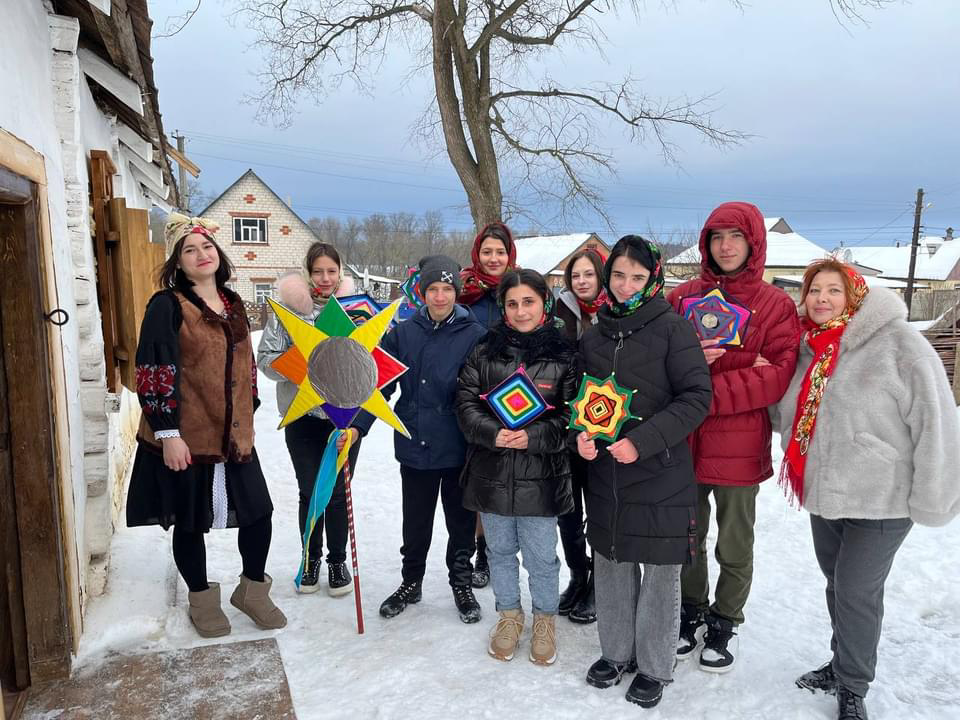
Vocal-choreographic class in the courtyard of HLYNA-hub.
According to the school director, students are quite actively interested in traditions and cultural heritage.
"I learned a lot about the history, construction, and features of traditional Ukrainian housing. I think such projects are very valuable for preserving our cultural heritage. They help us better understand ourselves," says Yuliia, 15.
Her peer Alina adds that she especially liked the atmosphere in the space: "The master classes I attended helped me to distract from what is happening now."
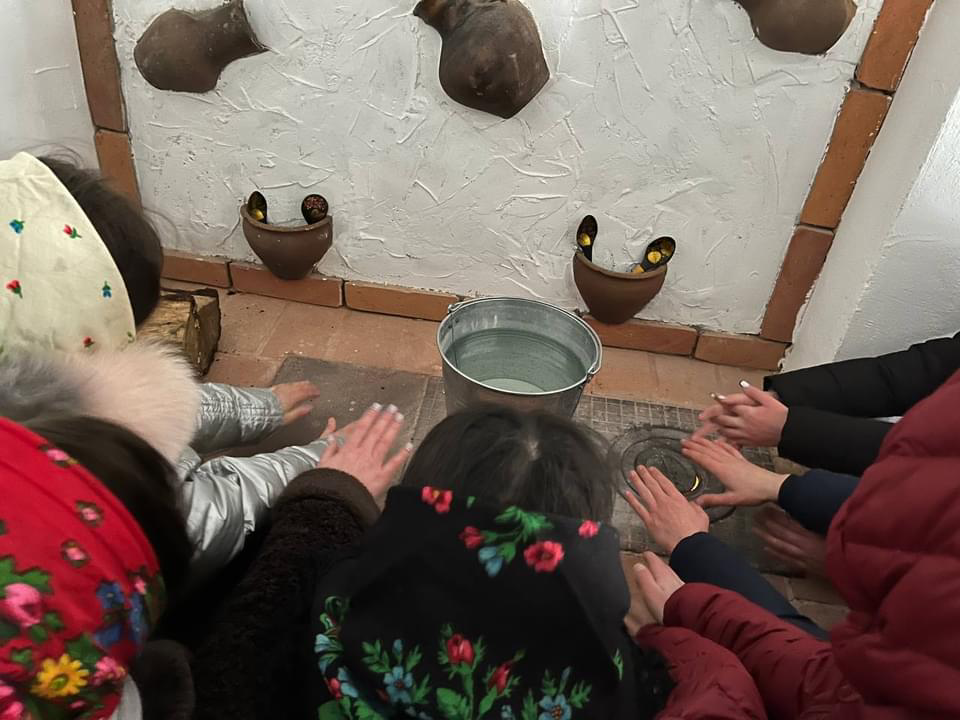
Children get to know the features of a mud house.
Even more useful solutions!
Authentic Ukrainian space
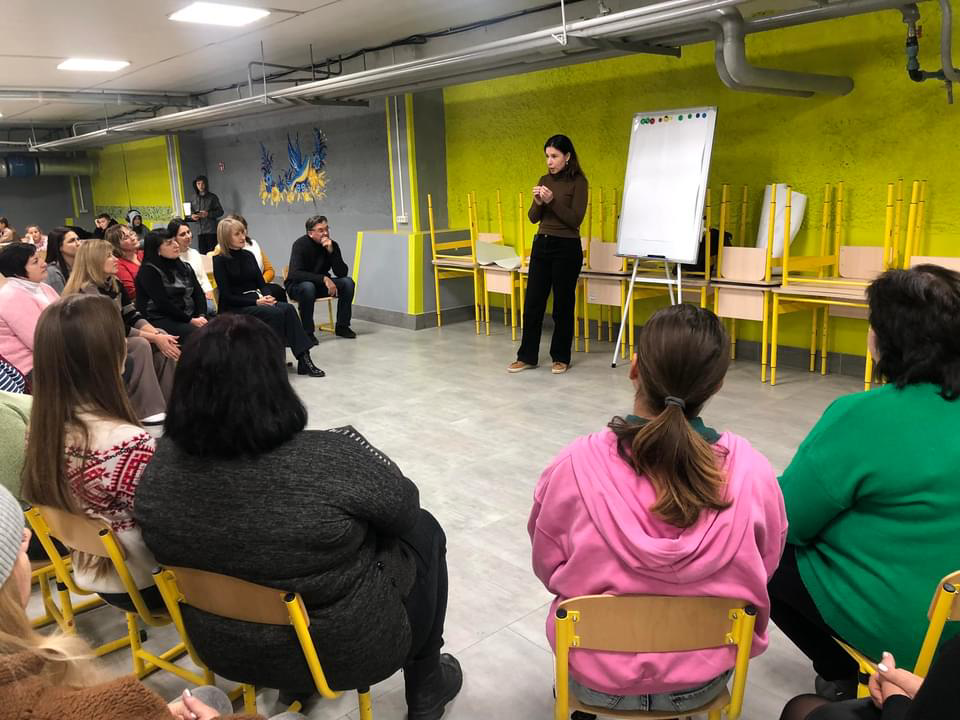
Meeting of the HLYNA-hub preKRASNOkut project team with representatives of Krasnokutsk community headmen.
The project to transform the hut into a co-creation space was completed in January, but work on arranging the yard will begin in the spring. Residents of the community plan to install a pavilion, stove, gates, fence, benches, and garden swings, lay paths made of natural materials, plant a cherry orchard and a vegetable garden. Perhaps even a small apiary will be set up in the future, and honey production workshops can be held.
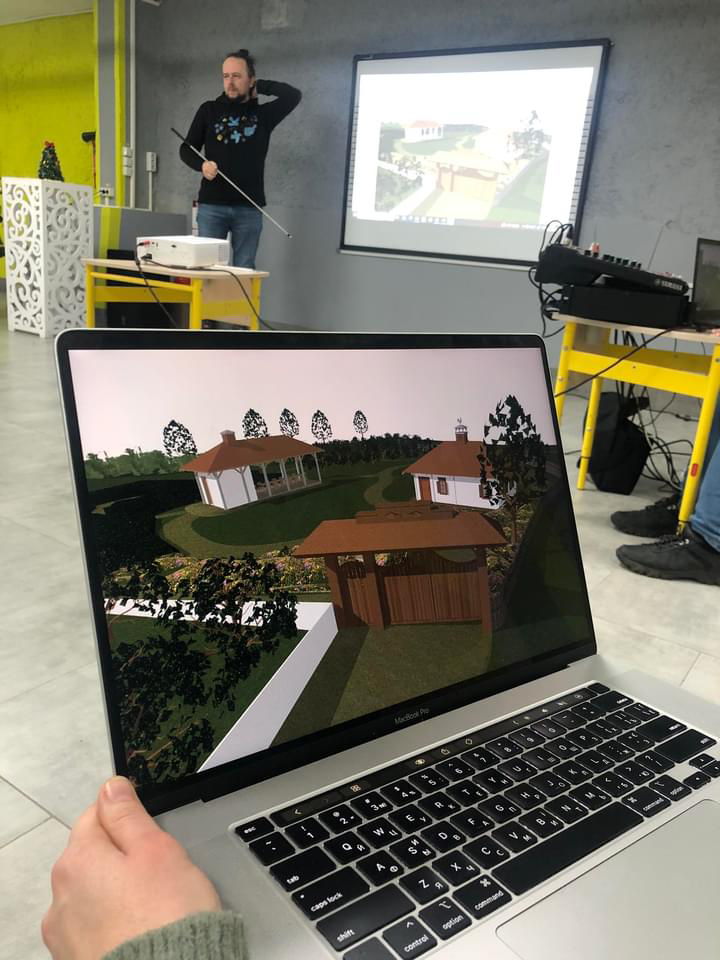
Layout of the НLYNA-hub preKRASNOkut co-creation space.
The project participants are most pleased that young people are joining in the task of restoring the house and making a useful space out of it.
This multifunctional space is suitable for both leisure and education; it can be a conference hall, a co-working space, or even a laboratory for experiments.
"The traditions of our people are unique and multifaceted. This project successfully combines the present with the past, in which the value is people, thought, creativity, and joint efforts. This is a special place with a special atmosphere of togetherness and creativity," Momot says proudly.
Newsletter
Digest of the most interesting news: just about the main thing







